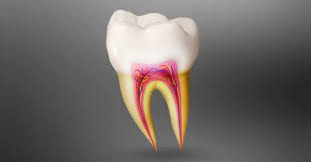Root canals are a dental procedure designed to preserve teeth compromised by decay or infection. They work by removing damaged or infected pulp, disinfecting the tooth, and sealing it to prevent further complications.
While all types of root canals share the same basic principles, the process can differ significantly when comparing pediatric and adult root canals. Here’s information on what a pediatric root canal entails, when your child might need one, and the differences between pediatric and adult root canals:
What Is a Pediatric Root Canal?
A pediatric root canal is a dental procedure tailored to treat infected or damaged teeth in children, either in baby teeth (primary teeth) or permanent teeth. Unlike adults, children’s teeth are still developing. A pediatric root canal focuses on preserving these teeth and making sure they function properly until they naturally fall out.
The process involves cleaning out the infected pulp within the tooth while maintaining the surrounding healthy tissue. Following the procedure, the tooth is usually restored with a crown or a durable filling to maintain its strength and function.
Root canals for kids are performed by pediatric dentists who specialize in working with children. They aim to use methods that are effective and comfortable for younger patients, incorporating techniques that reduce anxiety.
When May Your Child Need a Root Canal?
Children may require a root canal for several reasons, including but not limited to:
- Extensive Tooth Decay: That has reached the pulp.
- Traumatic Injuries: That have led to pulp damage or infection.
- Abscesses or Swelling: Signaling serious infections in the tooth.
Preserving a child’s tooth is fundamental not only for chewing and speaking but also for the proper alignment of surrounding teeth. Left untreated, infections could worsen, leading to pain and additional dental issues such as premature tooth loss.
What Are the Differences Between Pediatric and Adult Root Canals?
Though pediatric and adult root canals aim to address infected or damaged teeth, their procedures and goals differ due to the varying stages of tooth development. One of the distinguishing factors of root canals for kids is that they can be performed on both primary and permanent teeth. Baby teeth play a fundamental role in a child’s oral health, acting as placeholders for permanent teeth and guiding their alignment.
Pediatric dentists often do a child’s root canal in one dental visit, and the materials used can vary from those used in adult procedures. Adult root canals focus exclusively on permanent teeth. These treatments aim to save the tooth for life, reinforcing it for long-term functionality.
The anatomy of a child’s tooth and jaw structure is still developing, making root canals for kids unique. Procedures must be carried out with precision to avoid interfering with the natural growth of the tooth and surrounding jawbone. This contrasts with adult root canals, where tooth structure and bone density are fully developed, allowing for more standardized treatment approaches.
Learn More About Pediatric Root Canal Benefits
Understanding the differences between pediatric and adult root canals highlights the tailored approach required for young patients. Root canals for kids are about preserving primary and permanent teeth.
They help to keep your child’s oral health on track for proper growth and development. If you’re contemplating whether your child may need a root canal, consult with a qualified pediatric dentist. They will guide you through the process and provide the most suitable treatment for your child’s needs.
Related Articles
What You Need To Know About Varithena for Treating Varicose Veins
How to Manage Physical Discomfort During Stressful Situations





